Portrait in Rock’n’Roll, the debut album by Uwanosora “side project” Uwanosora ’67, was released on June 10th, 2015. This interview with its members Hirohide Kadoya and Megumi Iemoto was published on their website some days later. The album is unfortunately not as of writing available for digital purchase, but this shop appears to stock the album and will ship overseas (and here’s their English-language shopping guide). Please enjoy the interview.
Original interview & text: Takahide Uchi (parts one & two)
English translation: Henkka
Uwanosora ’67 on the web: website, Twitter: Kadoya & Iemoto
— To start off, I’d like to ask you about your initial motives in regards to Uwanosora ’67 and your first release, Portrait in Rock’n’Roll. Why did you decide to release this album with just you and Iemoto, and why not under the name of Uwanosora?
Hirohide Kadoya: The initial motive was simple: we wanted to release an album with a 60s approach. The fact that it ended up being just me and Iemoto was because me and Oketa had such different ideas about what we wanted to do with that concept. Sure, we could’ve just compromised and met halfway, but when we listened to what each of us had, there was just such a difference in the material that we found them incompatible with each other. That’s not to say that made things between us weird or anything — the both of us agreed that we wanted to try both those approaches and so we thought it’d be a fun idea if we’d both write our individual sets of songs for Iemoto to sing. And that’s how this came about. My batch of songs was completed first, so they’re also the ones getting released first. Uwanosora the group has always been us three, so it was our intention from the beginning to release this album under a different name. Well, all we did was add some numbers at the end though. (strained laugh)
— So that’s how it happened. So if your and Oketa’s ideas of that “60s approach” had been similar enough, there’s a chance this album might’ve been released under the name of Uwanosora instead? Also, out of curiosity, why is it specifically “’67” at the end of the band’s name? Do you have some sort of connection to certain releases from that year?
Kadoya: Yes, it’s possible it could’ve been released under the name of Uwanosora, but in that case I think we would’ve waited until after we’d released our second and third albums before putting out this one. Until then it would’ve just been something for ourselves to listen to.
The name “Uwanosora” itself had no deeper meaning to begin with. The impetus for it was Iemoto happily noticing that if you take away all the top parts of the characters in our name (“ウワノソラ”), it looks like “ノノノノノ.” So then I thought we should add either a 7 or a 9 at the end to continue the trend.
The “7” was simply my personal taste: “A Whiter Shade of Pale” is pretty much my no. 1 favorite song from the 60s, and it was released specifically in ’67. The “6” came about from us thinking, “if the band that can be heard on our debut album had made an album in the 60s, this is probably what it would sound like.” So, yeah, just a bit of roleplay. Even if it is quite forced. (strained laugh)
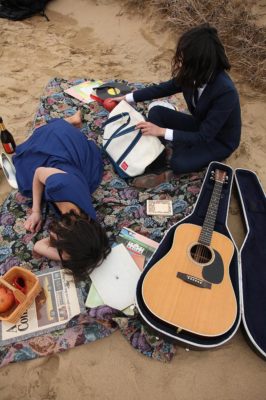 — Ah, “A Whiter Shade of Pale,” the representative Procol Harum song. I think I remember people like the members of Happy End, Tatsuro Yamashita, and Yuumin also listing that song as one of their favorites. But that’s a song from 20 years before you were even born. Did you hear it when it was revived in the form of some TV commercial? On a related note, the drummer on this song — a song characteristic of its drum fills — was actually not their early drummer, Bobby Harrison, but session jazz drummer Bill Eyden. Arranging their songs in a way that even its members aren’t able to play them properly — they were the pioneers of doing that even before the likes of Steely Dan! (laughs)
— Ah, “A Whiter Shade of Pale,” the representative Procol Harum song. I think I remember people like the members of Happy End, Tatsuro Yamashita, and Yuumin also listing that song as one of their favorites. But that’s a song from 20 years before you were even born. Did you hear it when it was revived in the form of some TV commercial? On a related note, the drummer on this song — a song characteristic of its drum fills — was actually not their early drummer, Bobby Harrison, but session jazz drummer Bill Eyden. Arranging their songs in a way that even its members aren’t able to play them properly — they were the pioneers of doing that even before the likes of Steely Dan! (laughs)
Kadoya: I first heard “A Whiter Shade of Pale” playing in my dad’s car when I was very young. The fact that I came to love music is in large part thanks to my dad’s influence. I didn’t know that about the drummer! To think that one of the most famous pieces of music in the past century had someone playing who wasn’t even a regular member! (laughs)
— This album was made in dedication to the memory of deeply missed musician Eiichi Otaki, who passed away in December 2013. There’s another big generation gap there with you and the average fan of his. When did you first come across Otaki and his music? Do you get something different out of his music than, say, old Western music?
Kadoya: Yes, we have stated that the album is dedicated to Eiichi Otaki. But, like I said, our initial reason for making the album was the one I described at the beginning of the interview. The desire to actually finish the album really got heightened around November 2013, which is when I wrote “Shelly ni Kubittake.” (In comparison, I wrote “Toshiue Boyfriend” in May 2013.) He passed away a month after, so that naturally gave me more drive to proceed in that direction. But I didn’t really want to “use” the name Eiichi Otaki — I never wanted to say “hey, we dedicated this thing to Otaki! Go buy our album!” Otaki was truly one-of-a-kind, a man with such vast knowledge and excellent taste — if I start talking about all the great things about him, I’d go on forever. It’d be impossible for me to sum him up in a few sentences.
I’m sure there are plenty of people out there who will think I’m not capable of portraying even the tiniest bit of the greatness of Otaki’s essence, and, as such, the album is no dedication to him at all. And really, making that the whole catchphrase of the album would be disgraceful. Although we may be a bunch of no-name musicians, we still have some pride in what we do. That’s why I felt that we should show our respect to Otaki not through words, but through our music. How the listeners receive it is all up to them. I just felt it’d be weird for us to announce it like that, though I recognize that it’s important to be clear with your intentions. But the way I thought of it was: I’m just this one guy from the sticks who made an album while thinking about Otaki. No one might know about it, no one might hear it… but it’s there. And I felt that was good enough. That was my mindset when making this album. (I realize this may sound weird. Sorry.) Thus, I feel very grateful to you and all the people at the stores who agreed to sell this album.
As for how I came across Otaki’s music, it was through Sunday Songbook (Tatsuro Yamashita’s radio show, broadcasted on the JFN FM network). They had their yearly New Year’s free talk corner where he was featured. His music is both similar and dissimilar to Western oldies — his music just has so much depth to it. Honestly, I could go on talking about him forever.
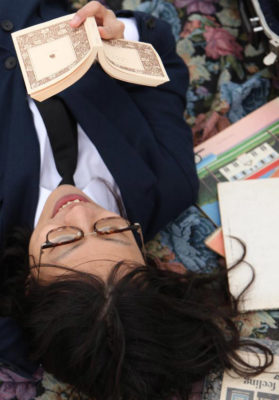 — I was surprised to hear that “Toshiue Boyfriend” — my personal favorite from the album — was already written by 2013. How familiar were you with 60s pop to begin with? What sort of artists did you listen to? Because listening to the 70s fusion and latin influences on tracks like “Sayonara Mugiwaraboushi” and “Genkin ni Karada wo Hare” on Uwanosora, I sort of assumed that was your thing.
— I was surprised to hear that “Toshiue Boyfriend” — my personal favorite from the album — was already written by 2013. How familiar were you with 60s pop to begin with? What sort of artists did you listen to? Because listening to the 70s fusion and latin influences on tracks like “Sayonara Mugiwaraboushi” and “Genkin ni Karada wo Hare” on Uwanosora, I sort of assumed that was your thing.
Kadoya: I don’t think I’m particularly discerned in 60s pop, or pop from any later era fom that matter. It’s such a huge culture, it’d be more fitting to call my knowledge of it non-existent or minimal at best.
Freddy Cannon, Association, Roger Nichols & The Small Circle of Friends, Elvis, Coasters, Johnny Tillotson, Four Seasons, Procol Harum, Connie Francis, Del Shannon, Phil Spector, Roy Orbison, The Dave Clark Five, Ray Charles, Four Freshmen, Burt Bacharach, etc… And I love all the hit songs of the era, too. Also, I’ve been listening to the airchecks on Sunday Songbook ever since I was in junior high. (There are lots of songs from albums that never got CD releases though, so I’m limited to just listening to the broadcasts in those instances. (strained laugh)) Also, the Beach Boys deserves a special mention as one of my absolute favorites.
And as for The Beatles who are pretty much thought of as the representative 60s band, I like them but I’m not crazy about them. I’m just your average fan. I can’t deny them having had some influence on my music though.
— It’s hard to call you a complete newbie if you listen to that many artists! Plus, it’s easy to sense that 60s music is not all you listen to. I’m beginning to understand the roots of how Portrait in Rock’n’Roll came to be. By the way, can I ask what your favorite Beach Boys album is? I’m sorry if that’s too difficult of a question to answer. (laughs)
Kadoya: That’d be Pet Sounds — even if the influence on this album would mostly be from their earlier output. (strained laugh)
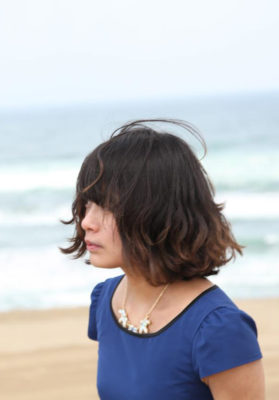 — I had Nagai from Lamp — another big Beach Boys fan — listen to this album, and he said his favorite song was “Ame Furu Heya de.” This song definitely has lots of influences of their sounds from ’63 and ’64. But as a whole, I agree that Pet Sounds is just overwhelming. And while we’re on the topic of sound: it feels like on this album you have the soul music influences — one of the trademarks of Uwanosora — to a minimum when it comes to the songwriting and arrangements, which is similar to Otaki’s approach as well. But as I understand it, this album was made around the same time as the songs on Uwanosora. What kind of a schedule did you have as far as writing and recording songs for this album was concerned?
— I had Nagai from Lamp — another big Beach Boys fan — listen to this album, and he said his favorite song was “Ame Furu Heya de.” This song definitely has lots of influences of their sounds from ’63 and ’64. But as a whole, I agree that Pet Sounds is just overwhelming. And while we’re on the topic of sound: it feels like on this album you have the soul music influences — one of the trademarks of Uwanosora — to a minimum when it comes to the songwriting and arrangements, which is similar to Otaki’s approach as well. But as I understand it, this album was made around the same time as the songs on Uwanosora. What kind of a schedule did you have as far as writing and recording songs for this album was concerned?
Kadoya: It’s exactly like you said: I kept the soul music influences to an absolute minimum. It wasn’t easy, though, with so many of the support members being fans of the genre.
As for the timeline: I made most of the 10 songs in February and March of 2014 and we started recording them in April. Then in May and June we were also simultaneously writing and recording songs for Uwanosora’s second album, but since we weren’t entirely happy with how that album was turning out, we sort of left it be and finished ’67 first. We were in a hurry because we were going to be graduating from university (even though in my case I’d had two gap years between high school and university and I had to repeat one year (strained laugh)). We knew that we’d never be able to work as actively on music after graduation, so we wanted to go on doing music for all the time we had left there.
— So you were already making preparations for Uwanosora’s second album as well. It sounds like your work on Portrait in Rock’n’Roll took precedence over your schoolwork and such — it could almost be called your graduation thesis! I mean, it was even a university of arts you were attending. (laughs) Considering how the music video to “Shelly ni Kubittake” was even directed by you, I guess it wouldn’t be an exaggeration to call it like a compilation of all that you’d learned there.
Kadoya: Yes. It was my graduation thesis. And with the music video of “Shelly ni Kubittake” I literally did everything from filming to the music, so I do indeed think of it as an anthology of my university years.
— You wrote all the lyrics and music on every song on the album. Did you receive any inspiration from Iemoto as far as the lyrics were concerned? Also, a question for Iemoto: what are your impressions on the world Kadoya writes about in his lyrics? That might be a difficult question to answer, but I thought I’d ask it as it’s generally thought that it’s mostly the vocalist who conveys the feel of the world portrayed in the lyrics, and unless one understands them well, that’s very difficult to do.
Kadoya: I was inspired by her, yes. When they’re lyrics from a female point of view, I always try to think about how Iemoto would say certain things. Also, I’m always asking her if she has any recent real life love stories to share.
Megumi Iemoto: The lyrics Kadoya writes are very interesting and easy to understand. He tells me when they’re based on real life experiences, when he has an idea of what the protagonist looks like or what his image of them is, what he thinks the best way to sing them would be and such. For the most part I get to just sing them the way I want to, though. It feels like he’s expressing not only things about women that men find lovely about them, but also things women are attracted to in men. His lyrics never portray complete happiness: there’s always a bit of sadness mixed in as well. I feel that’s something the listeners can pick up on and identify with. His lyrics are able to draw even myself completely into their world.
— Lyrics from the female point of view as well as real life experiences? I felt like there were subtleties in there that really don’t feel like they were written by a male. I got lots of vibes of a worldview similar to that of Takashi Matsumoto and perhaps that of Yuumin. Are they both people you’re aware of artistically?
Kadoya: Of course. I couldn’t get their lyrics out of my backbone even if I tried — their lyrics both brought me up as well as enriched my life in so many ways. Since I couldn’t listen to music during university lectures, I’d be writing down Takashi’s lyrics in my notebook to make up for it. Even just writing them down really soothed me.
A majority of the lyrics are not based on real life experiences. A tiny portion of them are, but I’d say maybe 90% of them are purely thanks to my imagination — or rather, my delusions.
— To revisit the topic of your sound on this album: from the very beginning of the first track, “Shelly ni Kubittake,” you have a very “big” sound on the album. Did you have any trouble with the arrangements or recording of this album?
Kadoya: There was so much to record, we were practically recording every day. It was like a whole year of walking around Osaka with a mic stand in hand. We couldn’t pay anyone much of a fee, so we at least wanted to record on days that were convenient to everyone. I didn’t even have time to do part-time work, so sooner rather than later I was without electricity, I’d be showering with cold water in the winter, and when the sun went down, I’d be lighting up candles. If I needed electricity, I’d head to my university. It got to the point where I was wondering what on earth I was doing. At times like that, I’d listen to the Beach Boys “Wouldn’t It Be Nice.” I’d be going to myself “oh, isn’t this nice?” (strained laugh) Listening to music was my only escape. Sure, the recording part wasn’t easy, but the hardest part of it all was definitely on the financial side.
— So you couldn’t even afford to pay your electricity bills. (laughs) Well, it’s no laughing matter, but I just feel touched by how deeply dedicated you were to your music. As for your recording troubles, I’m especially curious to know about the parts that you had to get in one take. I’m guessing the horns and strings were overdubbed, but that doesn’t work with the rhythm section. Along with “Shelly,” you also had twin drums on “Hey×3 Blue×3” and “Station No.2.” How was that experience?
Kadoya: The songs with twin drums were “Shelly ni Kubittake,” “Toshiue Boyfriend,” “Hey×3 Blue×3” and “Station No.2.” Of these four, the first two were actually overdubbed. Rhythm especially is something that really just varies musician to musician, so even recording two drummers of the same styles was difficult — this held especially true with “Shelly ni Kubittake” that was played in a shuffle beat. We actually tried recording it with two drummers at the same time, but we just couldn’t get them to gel. Naruhashi, the guy we had play on all of the tracks, told me that this song would never work if he couldn’t play it all by himself, so we had to overdub it. We tried all sorts of things to increase the thickness of the two tracks: different drum sets, different rooms, even different days — even with the same person, your groove will vary day to day. As for the latter two songs, those went really well. I was there to see them being recorded and it was really quite cool. If at all possible, I’d love to be able to recreate that live as well.
— I’m looking forward to a live recreation of Portrait in Rock’n’Roll! Ever since last year’s Uwanosora, I’ve been sort of trying to find your roots in Western and 70s Japanese new music (city pop). Thus, I’d like to ask you both to introduce five albums you have on hand that you consider your favorites, as well as your reasons why.
Iemoto: My favorites change often so this is a difficult one to answer properly.
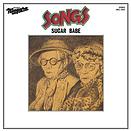 1. SUGAR BABE – SONGS
1. SUGAR BABE – SONGS
I like all songs on this album, but I especially love “Shinkirou no Machi,” “Kaze no Sekai,” “Itsumodoori,” and “Sugisarishi Hibi -60’s Dream-.”
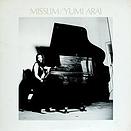
2. Yumi Arai – MISSLIM
My dad used to play this album a lot when I was a child. I’m taken back to those times whenever I listen to the album which makes me feel very nostalgic. I love the album to this day.
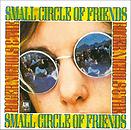 3. Roger Nichols & The Small Circle Of Friends – The Complete Roger Nichols & The Small Circle Of Friends
3. Roger Nichols & The Small Circle Of Friends – The Complete Roger Nichols & The Small Circle Of Friends
Oketa told me about this album. Go out to the city while listening to this and you’ll feel at times excited and, at other times, melancholy. It colors everything around you. I love it.
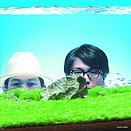 4. Kirinji – BUOYANCY
4. Kirinji – BUOYANCY
Doesn’t matter what’s going on with me: this is the album I first listen to on most days more often than not. It’s become like a part of my daily routine. I like all the songs, but perhaps especially “Onsengai no Étranger,” “Selene no Serenade,” and “Sora Tobu Shinkaigyo.”
 5. Lamp – Hachigatsu no Shijou
5. Lamp – Hachigatsu no Shijou
I spend the majority of each day at my place of work, so when I get to listen to music it’s mostly at train platforms and inside trains. At times like that, Hachigatsu no Shijou makes the air I’m breathing feel different. It’s the album that does the best job of transporting me to a whole other world.
Kadoya: This is a tough question… For great albums I have on hand, I have boxes and boxes of them right here, so that’s very troublesome. (Okay, maybe that’s not quite the same as “on hand” (strained laugh)). Anyway, since your question wasn’t the “albums would you take with you on a deserted island” type, I’m going to assume that I can change my opinion on what these five albums are at any time, so these are my five favorite albums of today. I realize that’s a huge cop-out. I’m sorry… (strained laugh)
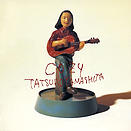 1. Tatsuro Yamashita – COZY
1. Tatsuro Yamashita – COZY
One of the most monumental J-pop works of all time in my opinion. This album tells me that no matter how many tens of filters it’s passed through, the genes of the pioneers of popular music are going to live on. All of Tatsuro’s albums are great, but today it’s going to be this one.
 2. Eiichi Otaki – A LONG VACATION
2. Eiichi Otaki – A LONG VACATION
“A breeze blows through your heart.” (Note: the catchphrase on the obi strip of this album.) The recording, lyrics, compositions, arrangements, playing, mixing, producing, everything about this album is amazing. I don’t think there’s anyone out there who hasn’t heard this already, but if by any chance you don’t know about it or you haven’t heard it? I don’t care if you have to skip out on school, work, hospital, protest or graveyard, just please go out and buy this album. Even before you listen to our album, or before you finish reading this interview, hearing this album takes precedence.
 3. Santana – Borboletta
3. Santana – Borboletta
Mesmerizing. This is what is mesmerizing to me today. It’s quite a rarity for Santana in that it has quite a lot of AOR influence, but that’s what gives it such an exquisite balance when mixed with his personality. I genuinely do not understand why this album didn’t become more popular — to me it’s one of the greatest albums of all time.
 4. Marvin Gaye – I Want You
4. Marvin Gaye – I Want You
Sexy, romantic and mellow. Marvin Gaye and Leon Ware. To me, it’s a godly album. This is what I listen to when I head to the convenience store in the dead of the night.
 5. Sharon Forrester – Sharon
5. Sharon Forrester – Sharon
I’ve been listening to this every day since I first heard it. Her voice is so cute. She’s become my idol. This fits Sunday afternoons perfectly. Well, it fits weekday afternoons just as well, too. It’s the perfect album as we head towards summer. (I initially meant to introduce an Al Di Meola album here, but I opted to revise my choice.)
— I’m interested to hear about what Uwanosora ’67 has coming up in the future, live shows included. Is there anything planned as of now? Also, is there anything in the horizon with you three and Uwanosora?
Kadoya: There are no activities for Uwanosora ’67 planned. There are some obstacles, both financial as well as time-related, so we’re going to take our time making the next album. As far as Uwanosora goes, we’re doing a live show on June 27, 2015. We have no definite plans as far as our next album goes. All of our living arrangements are going through changes right now so I can’t predict when we’ll be able to work together again, but I’m looking forward to it whenever that is.
— That answer might cause some worry to readers who are looking forward to upcoming releases from you. While talent is by no means just a passing thing in life, there is a certain spark — a passion — to things that you can only achieve when you’re in your twenties, so I hope you can work together again within that timespan.
Kadoya: Thank you. Just the other day we actually had a puzzling discussion with the members about the kind of music we’ll be making when we’re all in our eighties. We love listening to and making music more than anything else, so don’t worry: I don’t see ourselves stopping our musical activities. (Well, I can imagine becoming unable to go on though.) In any case, when the time comes, I hope you will all listen to what we come up with next.
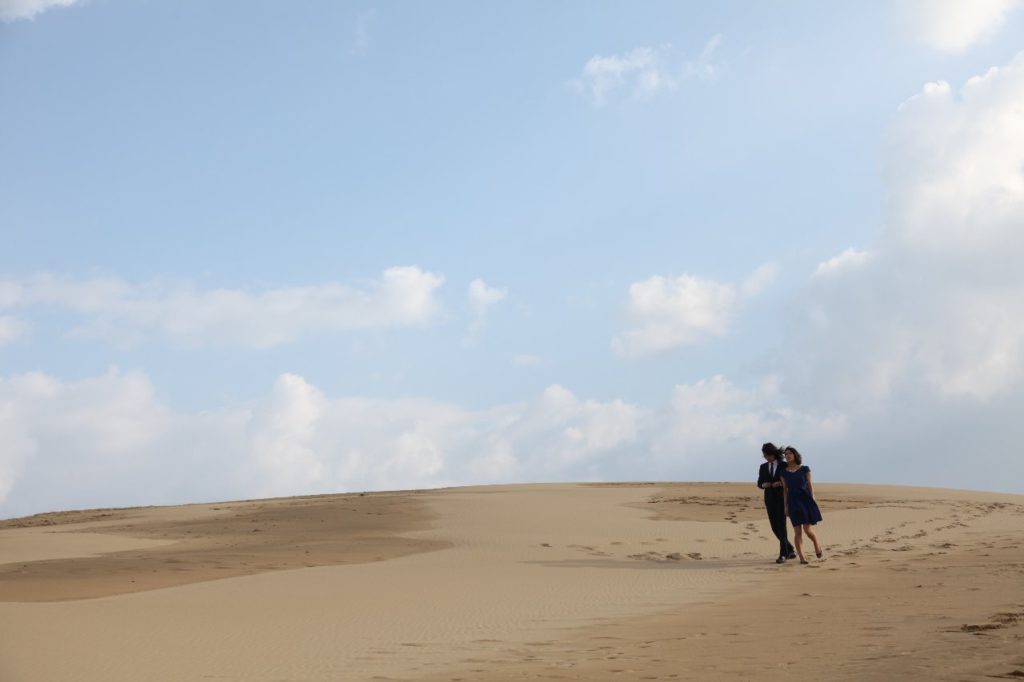


This album is brilliant. The 60s influence is so perfect! I have to agree with Lamp’s Nagai–“雨降る部屋で” is one of the best tracks. Thank you again for translating a great interview.
By the way, Dessinee Shop actually does overseas shipping, in case international fans want to pick up the album: http://www.dessineeshop.com/shop/shopdetail.html?brandcode=000000013605
Hey fitear1590. I’m glad you liked the interview. Great album indeed! And that’s a good find, it indeed looks like that shop will ship overseas and is PayPal-friendly. I’ll edit the post accordingly. Thank you!
Pingback: Uwanosora ’67 – Portrait in Rock’n’Roll | Muzakally Inclined